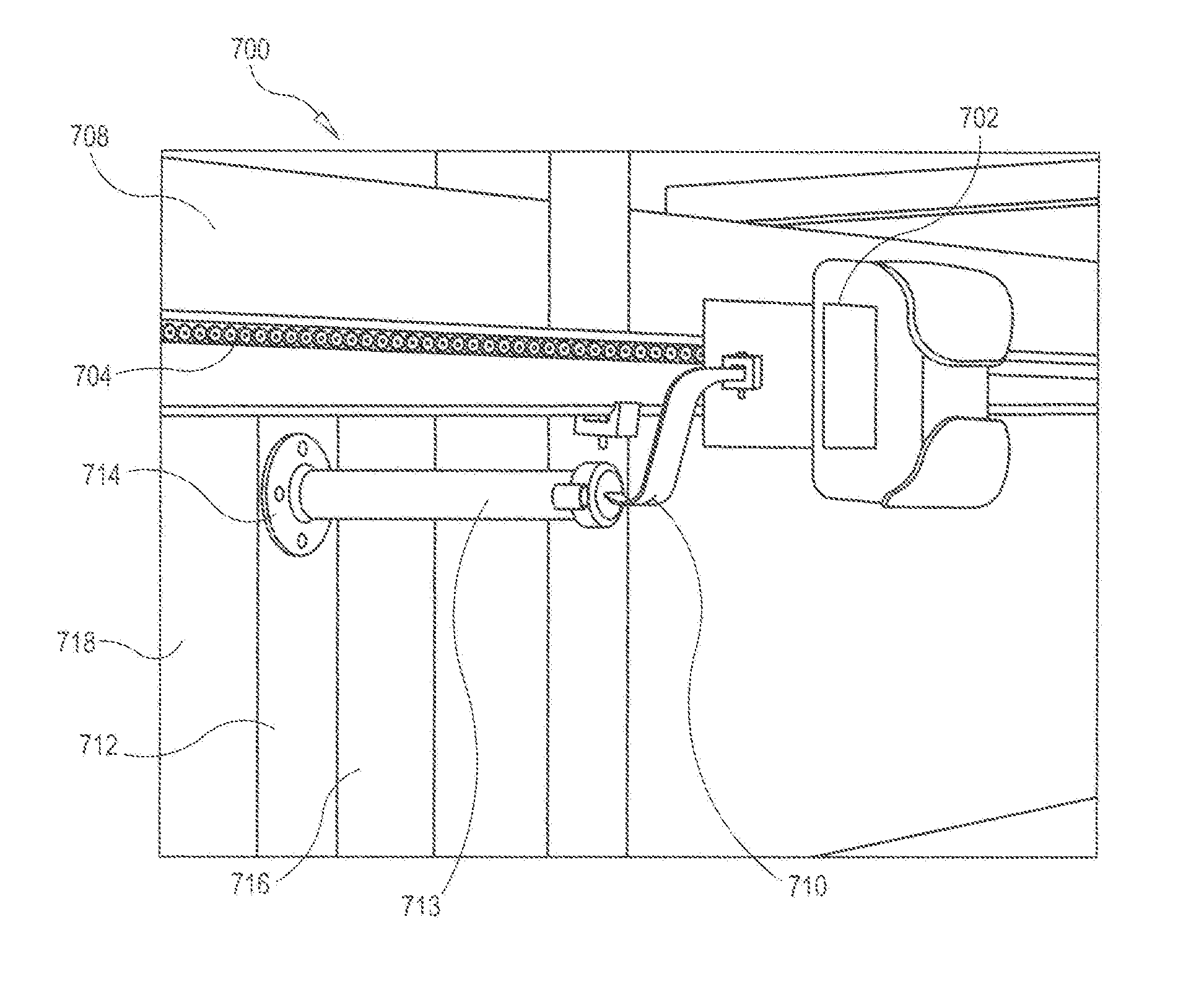Automatic sliding door systems, apparatus and methods
a sliding door and automatic technology, applied in the direction of mechanical equipment, machine supports, wing accessories, etc., can solve the problems of reducing the useable vertical height of the internal space, affecting the use of the overhead door, so as to minimize the impingement to the vertical space and minimize the impingement to the horizontal spa
- Summary
- Abstract
- Description
- Claims
- Application Information
AI Technical Summary
Benefits of technology
Problems solved by technology
Method used
Image
Examples
Embodiment Construction
[0089]The present invention relates to sliding door systems, apparatus and methods of using and making the same. Specifically, the present invention relates to systems for opening horizontally sliding doors on a structure, such as, for example, a barn, warehouse, hangar, or other building or structure. Moreover, the present invention relates to apparatuses for providing the automatic opening of sliding doors. In addition, methods of making and using the same are provided.
[0090]To this end, FIG. 1 illustrates a perspective view of a building 10 having laterally sliding door panels 12, 14 of a bifurcated door 16 in an embodiment of the present invention. The bifurcated door 16 may cover an entrance 18 to the building 10, as illustrated in FIG. 2. The building 10 may be a warehouse, barn, hangar, storage area, or any other building. The bifurcated door 16 generally opens laterally, or horizontally, with each of the two panels 12, 14 opening outwardly from a middle of the entrance 18. A...
PUM
 Login to View More
Login to View More Abstract
Description
Claims
Application Information
 Login to View More
Login to View More - R&D
- Intellectual Property
- Life Sciences
- Materials
- Tech Scout
- Unparalleled Data Quality
- Higher Quality Content
- 60% Fewer Hallucinations
Browse by: Latest US Patents, China's latest patents, Technical Efficacy Thesaurus, Application Domain, Technology Topic, Popular Technical Reports.
© 2025 PatSnap. All rights reserved.Legal|Privacy policy|Modern Slavery Act Transparency Statement|Sitemap|About US| Contact US: help@patsnap.com



